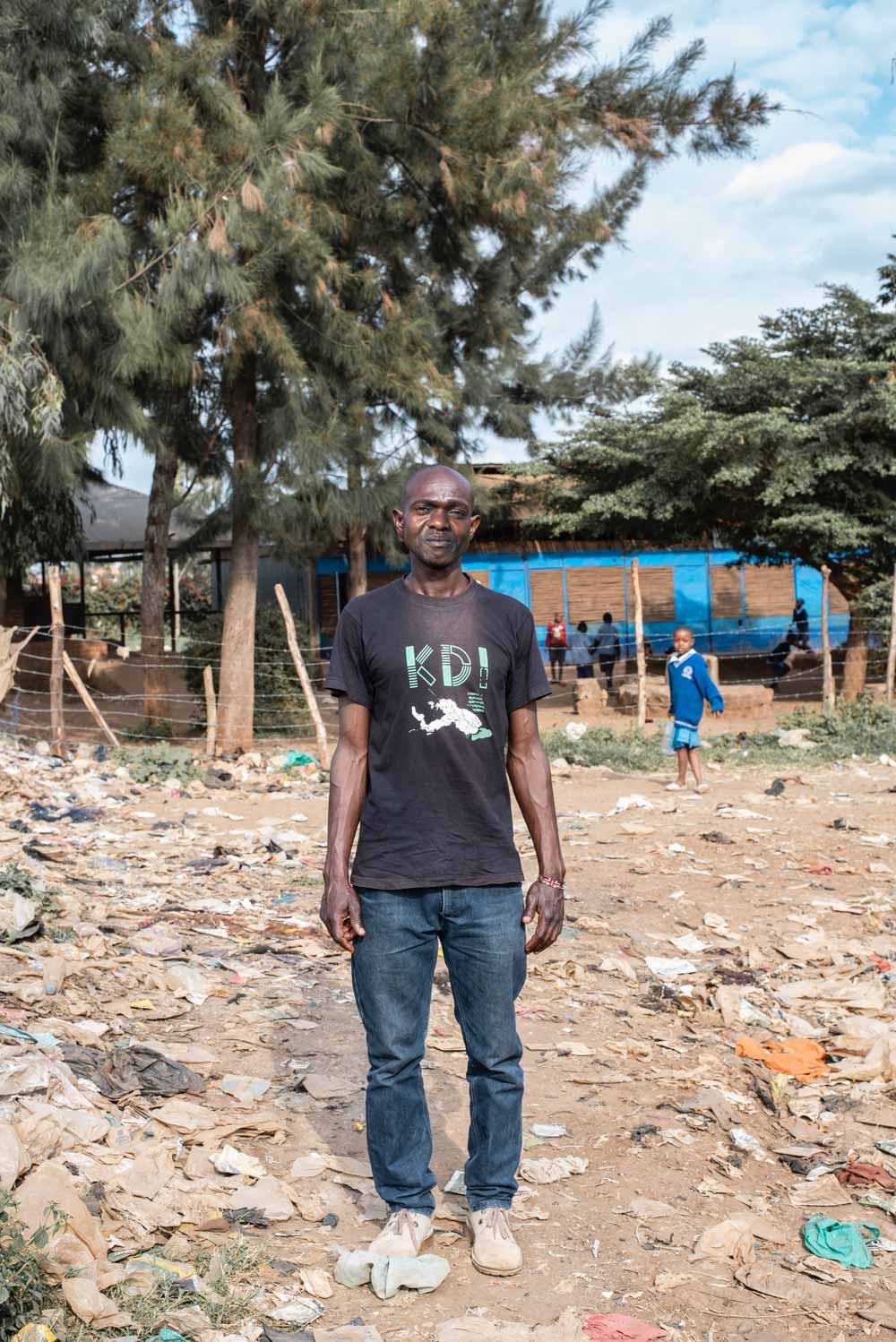This is the first in a series of articles which highlights the complexities of Moving in Nairobi through the eyes of four commuters as they walk, ride motorcycles (boda boda), take buses (matatu), and hire Ubers from the wealthy neighborhoods adjacent to the United Nations to the low-income communities in the city center. Three and a half million people move through this East African capital every day, and the lack of coordinated transportation planning often causes the city to grind to a halt. Our first commuter, Somba Muchiri, is a resident of Nairobi’s Kibera district and commutes each day by foot.
Twice daily, Somba Muchiri makes his way on foot through the Kenyan capital to work. Many of his fellow pedestrians are schoolchildren, who congregate at the sides of busy streets in groups, waiting to cross safely. Somba, known by some as the “Mayor of Kibera,” meets many friends and neighbors walking through the neighborhood on their way to work in Nairobi’s Central Business District – a journey that can take over an hour.
“I walk one hour each way through the narrow alleys and hills of Kibera. Sometimes the rains make it hard to pass, but I know the shortcuts.”
Somba experiences the struggles of being a pedestrian in Nairobi. Pedestrian safety has become a key concern for the city, where 80% of streets do not have a place for citizens to safely walk. This concern is echoed on the global scale, as many rapidly developing cities face the same problems. The 2030 Sustainable Development Goal (STG) has made road safety a topic that must be addressed.
The lack of sidewalks in Nairobi has much to do with the lack of planning: many new roads are approved without the addition of sidewalks or ways for pedestrians to cross the street, leaving pedestrians to run across four lanes of highway. Yet, with close to half (47%) of Nairobi’s commuters walking each day, planning must address their safety. In Nairobi, there are more deaths due to traffic accidents than heart attacks. In 2017, 261 pedestrians were killed in traffic accidents alone, 63% of the total number of deaths in traffic.
Those living in some of Nairobi’s poorest communities, such as Mathare and Kibera, are unable to afford the fare on traditional transit options like matatus (buses) and boda bodas (motorcycles) and must walk to work. Some journeys can be up to 12 miles each day. The long hours spent on streets that are choked with fumes from matatus, trucks, and cars, create serious health problems for pedestrians, beyond the danger of being unprotected in the middle of traffic. Improving the urban design of the city’s streets to create shared roadways could greatly improve the safety and health of Nairobi’s public, and improve the public realm in general.
Somba plays an active role in improving the public realm of his neighborhood. He works at Kounkuey Design Initiative (KDI), an urban design practice focused on improving the urban design and public spaces in Kibera. Somba is seen in the photo above standing in front of one of the most well-known projects developed by KDI, which transformed a dumping ground into a public space that everyone in Kibera uses. According to KDI, “Each element of the public space is part of a system: the pavilion (seen here), for example, is rented out to a school and a church; its roof captures rainwater that helps grow sustainable produce and generate income.” Nairobi residents are keen to do their part towards improving their communities, and Somba’s work in Kibera is a great example.



















